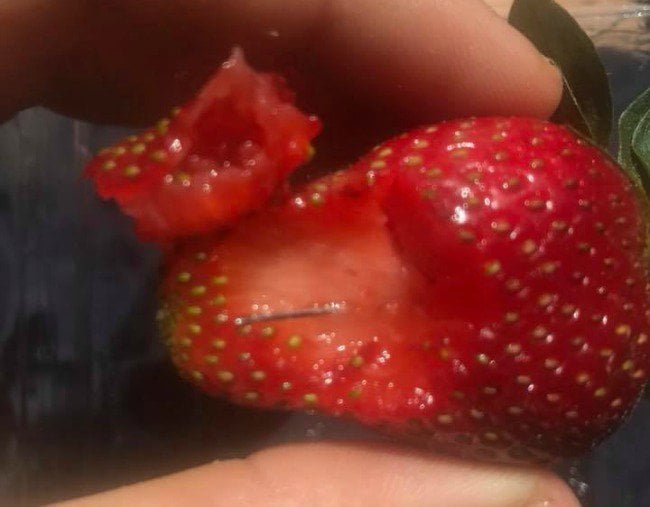
There’s a lot happening with fruit lately.
Nationwide reports of strawberries contaminated with needles began to emerge last week, with a development today of isolated accounts involving apples and bananas.
Investigations are still underway, and while it is suspected a disgruntled strawberry farm employee was behind the first reported incident, the ensuing cases in neighbouring states have been copycats in what is being labelled ‘commercial terrorism’ by fruit growers.
While a health warning still remains for consumers to cut up or throw out strawberries they’ve purchased, the fruit growing industry faces a potentially multi-million dollar blow as products are pulled from local shelves and exports banned by international trade partners.
Here’s what’s happening:
How it all started.
Last Wednesday, health officials and police said sewing needles were hidden in at least three punnets of strawberries supplied to Woolworths from a southeast Queensland farm.
Following the Queensland investigation, two people in Victoria came forward with similar experiences.
Sewing needles have since been found in strawberries in all six states, with eight incidents in NSW, six in Victoria, four in Queensland, four in WA, three in SA and one in Tasmania.
Today, news.com.au reported a woman found a needle in a Pink Lady apple purchased from Woolworths. Woolworths has been advised by the NSW Department of Health not to remove the apples from their shelves for now as investigations continue.




























































































